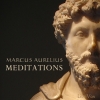
ABOUT THE BOOK:
The Happiness Trap By Russ Harris
Name: The Happiness Trap: Stop Struggling and Start Living
Author: Russ Harris
Book available in English at: Amazon
Book size: 284 pages
Link:
The Happiness Trap is a book written by Russ Harris to help individuals combat challenges while striving to build a rich and meaningful life. The Happiness Trap is a book for both psychologists and clients alike as it makes the tools of mindfulness and Acceptance and Commitment Therapy accessible, and applicable to the individuals’ everyday lives.
Russ Harris begins the Happiness Trap by writing that happiness is something we all strive for in life. Harris emphasises that the word happiness has two different meanings. Happiness, in its foremost definition, is a sense of pleasure and gratification. He talks about how we all love the feeling of happiness so we spend most of our time chasing that feeling. This wherein lies our shortfall, as he explains that happiness is a feeling that will always come. and go. The more that individuals yearn for and pursue pleasurable experiences, the more likely they are to avoid unpleasant emotions and suffer from anxiety or depression.
Moreover, Harris talks about happiness as a way for individuals to build a rich and meaningful life. Harris elaborates on this by noting that people can move towards a fulfilled life by acting on the things that they truly want by behaving in line with their values and with what they identify as worthy within their lives. This in turn, leads individuals to live a fulfilled and meaningful life. However, Harris notes that individuals do not focus on this meaning of happiness, but rather they focus on the first definition of happiness. There is no doubt that happiness is a pleasant feeling, but it is just that- a feeling that will come and will eventually go. Russ Harris explains that nothing is permanent and if we try to cling to the feeling of happiness, then we will get into a cycle of attempting to avoid the unpleasant or avoid change.
The Happiness Trap is a book that walks through different strategies and tools with the reader in order to limit painful thoughts and feelings. It is a book that aims to help individuals become more open to these experiences by gaining confidence in their ability to handle challenges effectively and learn how to fundamentally transform one’s relationship with negative experiences. This in turn allows the reader to reduce the impact of their negative thoughts and unpleasant feelings, taking away their power and influence over their life.
There are two different ways to read the Happiness Trap. Readers can either read the book slowly, taking time to practice the exercises as they go or readers can read it from front to back rapidly and then go back to revisit the exercises after completing the book. After reading the book, individuals can also visit Russ Harris’ webpage and access the free online resources in order to continue practicing the exercises every day.
The Happiness Trap is a book filled with many different exercises centred around Acceptance and Commitment Therapy (ACT) and therefore will contain many mindfulness exercises, skills related to cognitive defusion, values based therapy work, and skills to help individuals face their fears and stop avoiding unpleasant situations and emotions.
Below is a list of the exercises that can be accessed in the book. It is best practice to read the chapter first prior to attempting these exercises using the worksheets online via www.thehappinesstrap.com or in the Happiness Trap Book. The aim of the worksheets is to help readers reduce stress and worry, diminish personal insecurities, handle painful thoughts and emotions, break problematic habits, find fulfillment within the everyday, and build more satisfying relationships for a more rich and meaningful life.

Exercises available within the Happiness Trap Book
Chapter 1: Control of Thoughts and Feelings Questionnaire
Chapter 2: a) Costs of Avoidance Worksheet
Chapter 2: b) Avoidance and Suffering Diary
Chapter 9: Defusion Practice Worksheet
Chapter 13: Expansion Practice Worksheet
Chapter 18: Informal Mindfulness Practice
Chapter 20: Mindful Breathing Practice Worksheet
Chapter 25: a) The Life Values Questionnaire
Chapter 25: b) Detailed Bull’s Eye Worksheet
Chapter 25: c) Brief Bull’s Eye Worksheet
Chapter 27: Goal Setting Worksheet
Chapter 30: Overcoming F.E.A.R. Worksheet
Chapter 31: The Willingness and Action Plan
Appendix: What To Do In A Crisis
Things to consider while reading the Happiness Trap
Take your time
Practice patience and self-compassion as you read through the book. Some skills may come naturally to you and work very well, other exercises may be more difficult to grasp and may not be as effective. Try not to judge yourself if you inevitably make mistakes or do not succeed. You are only human so please give yourself the space to be human and give yourself ample time to practice your new skills and troubleshoot them as you go.
Consider using the online resources
There are various online resources available on Russ Harris’ webpage www.thehapinesstrap.com. What you may find most helpful are the worksheets that are free to download and the CD and MP3 recordings that are freely available and designed to use with the Happiness Trap. They are all available via the web page listed above. This may be very helpful to your learning of skills as mindfulness may become less challenging to practice if there is a voice guiding you.
Repetition and Practice
Russ Harris wrote the Happiness Trap with the intention that people will re-read it during challenging or difficult times. Russ Harris notes that his hope is that after people have read the book once, they repeatedly revisit it to brush up on their skills. The repetitive reading of the book may also encourage readers to practice their skills often and widely in order to be better able to generalise their skills to various situations and experiences.










